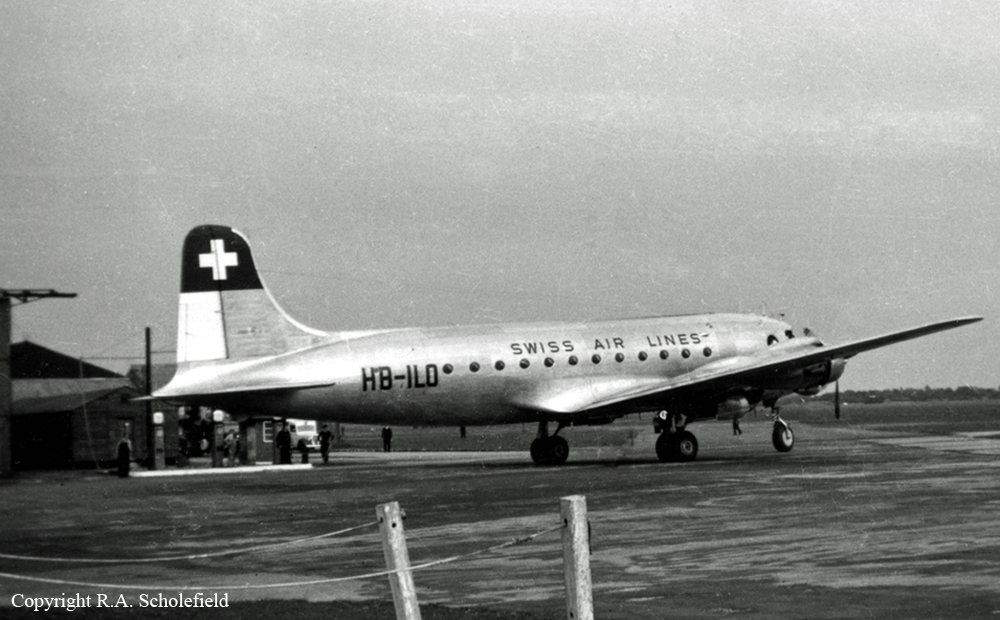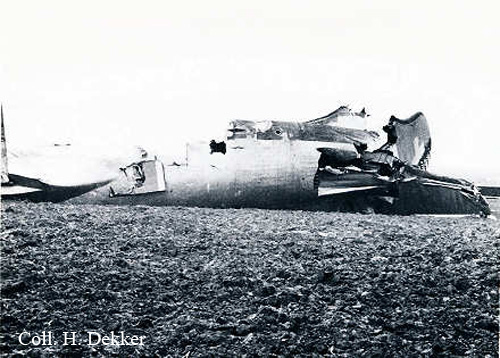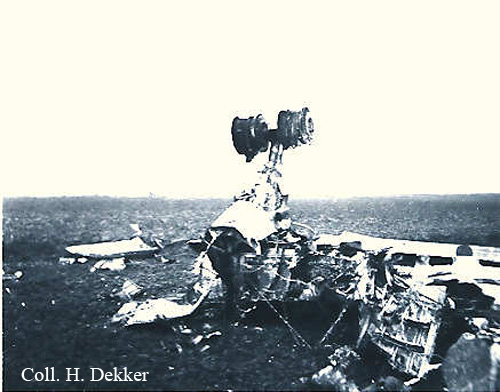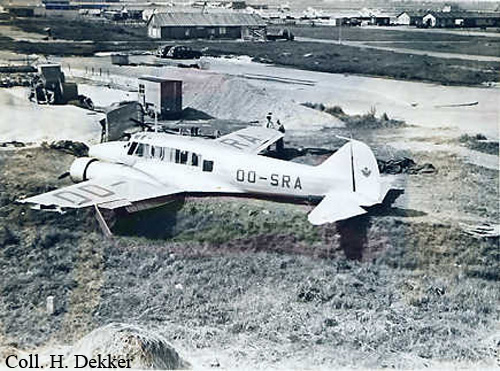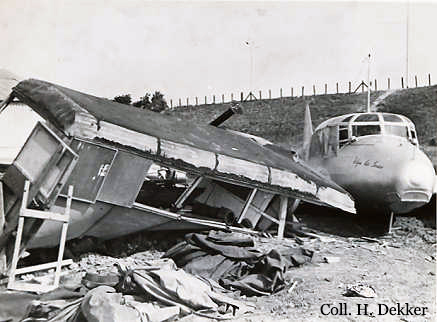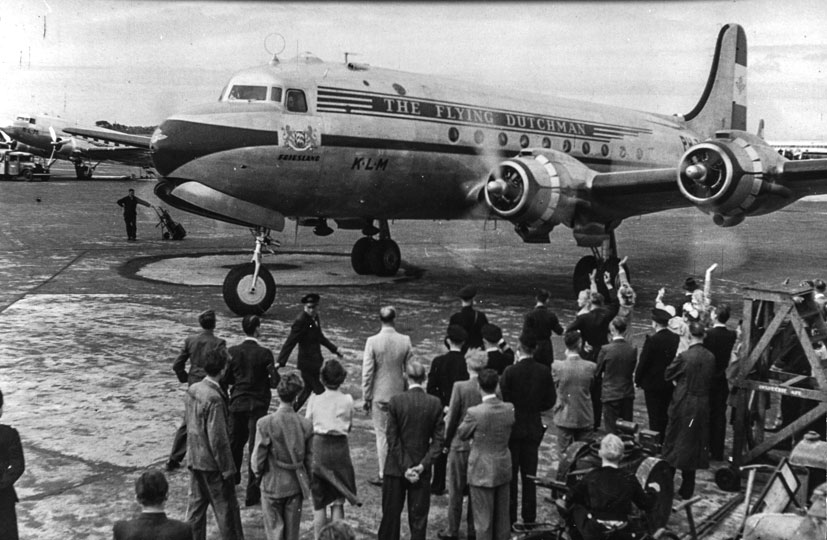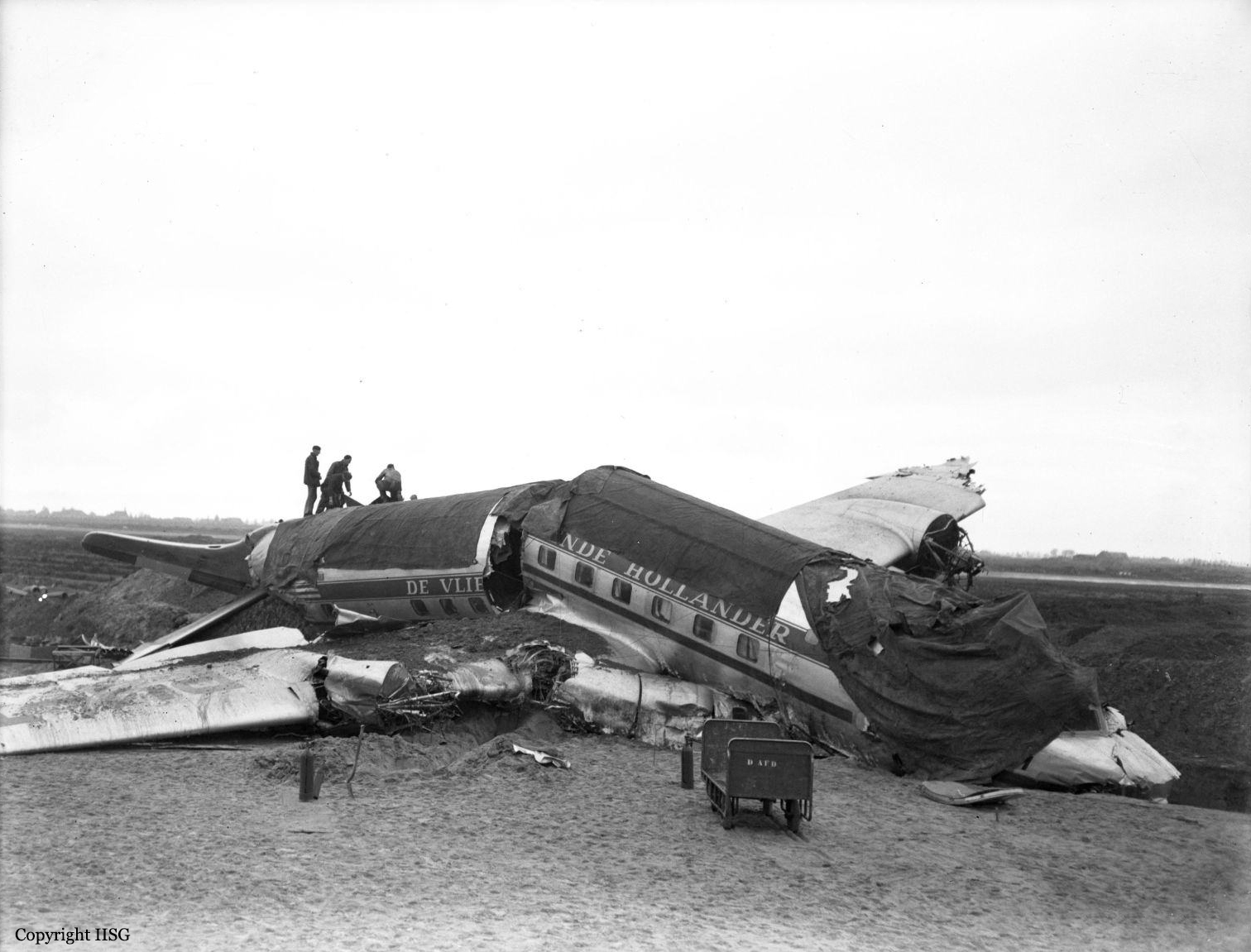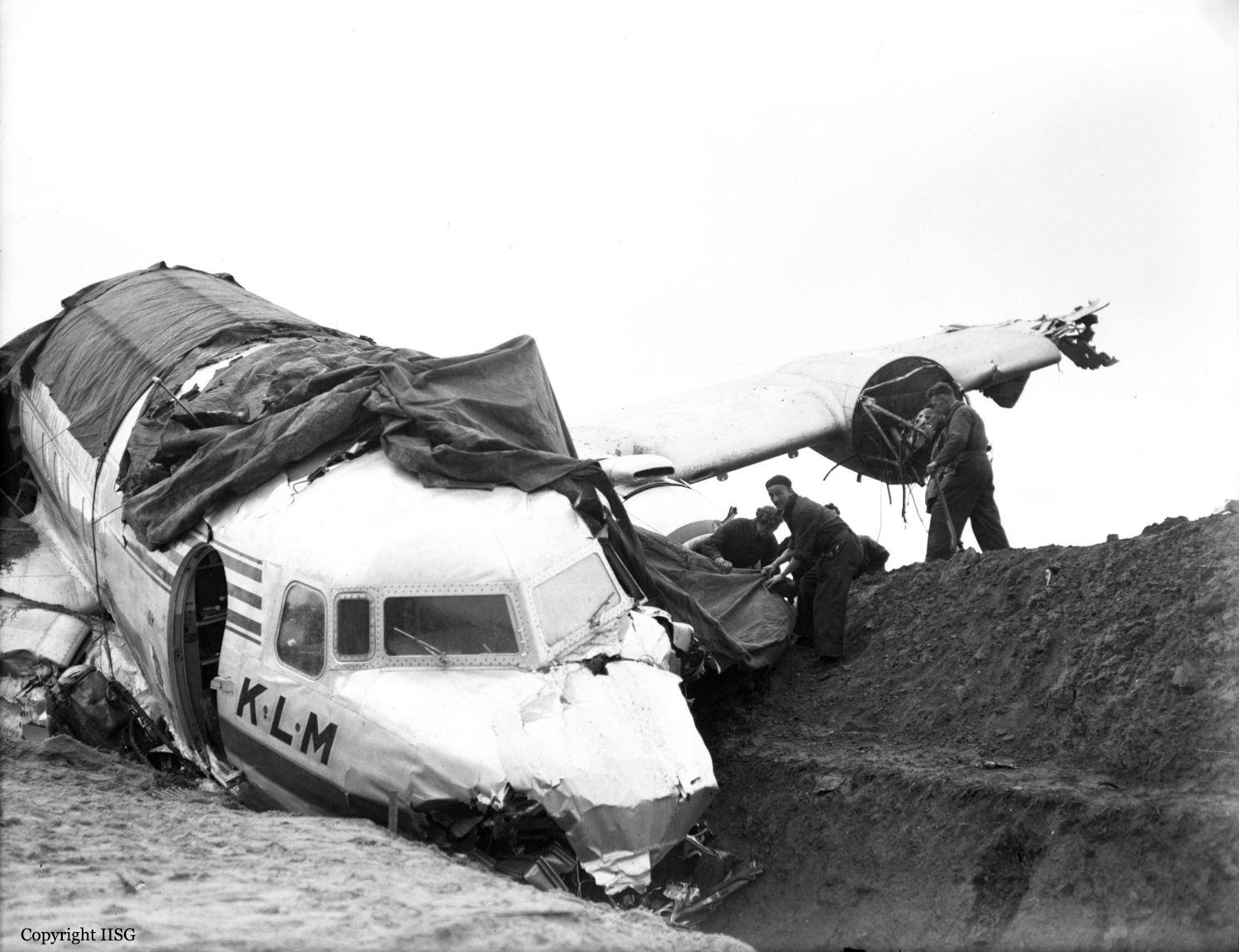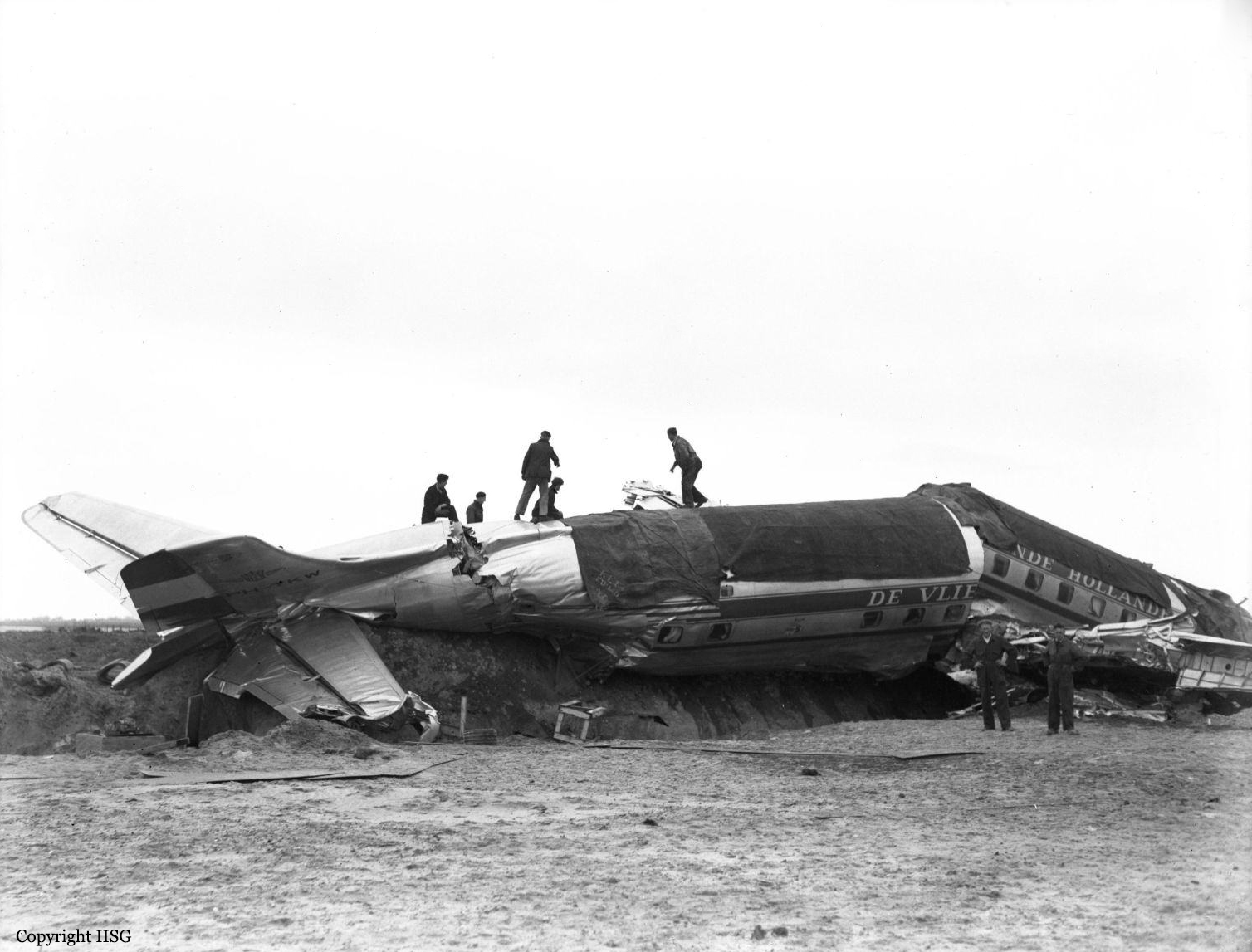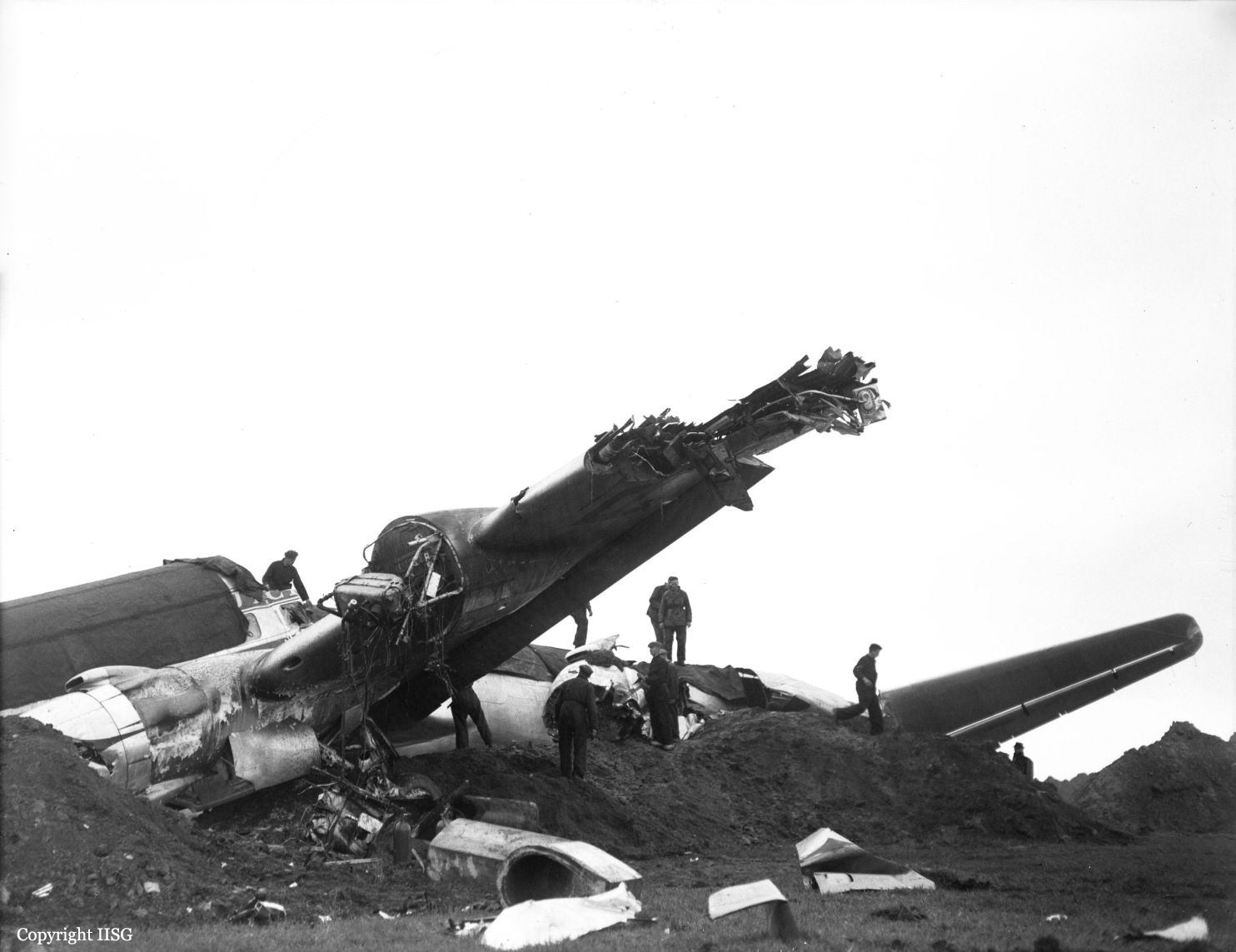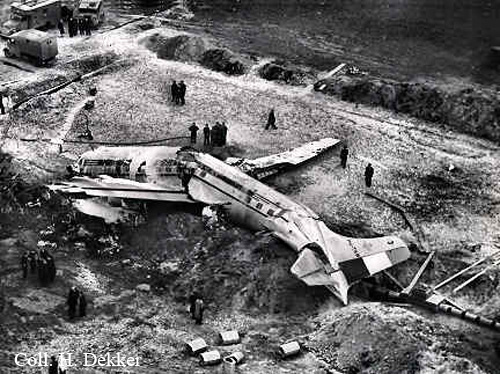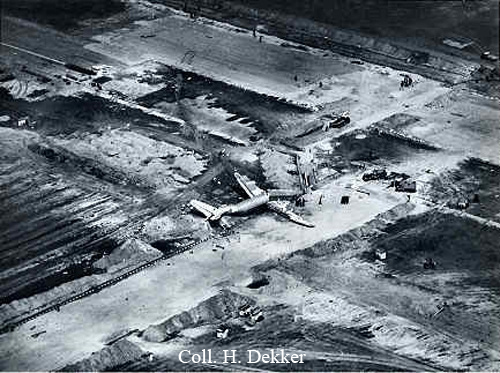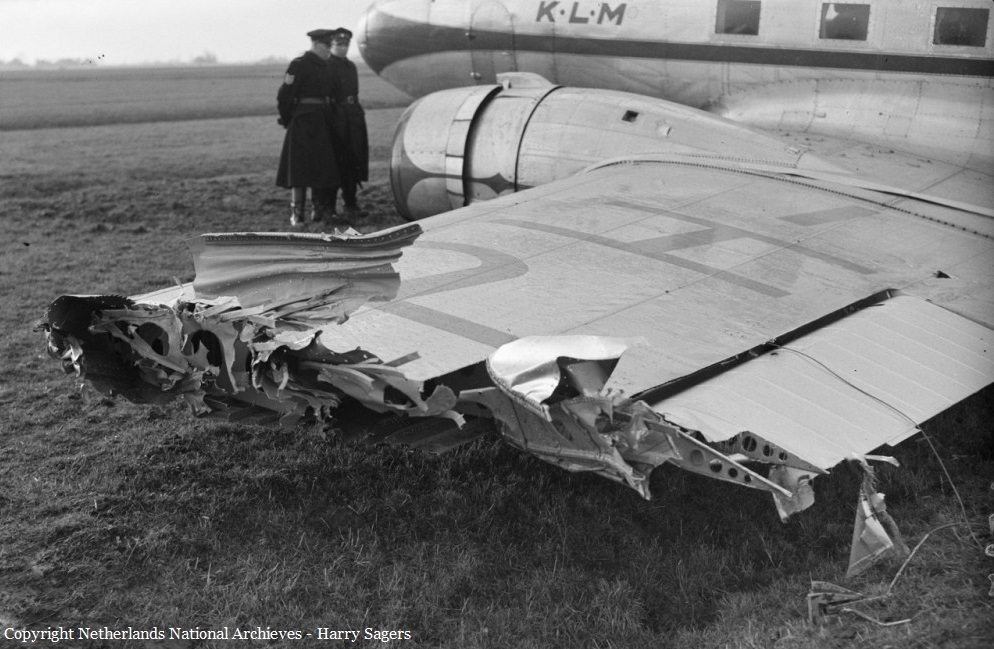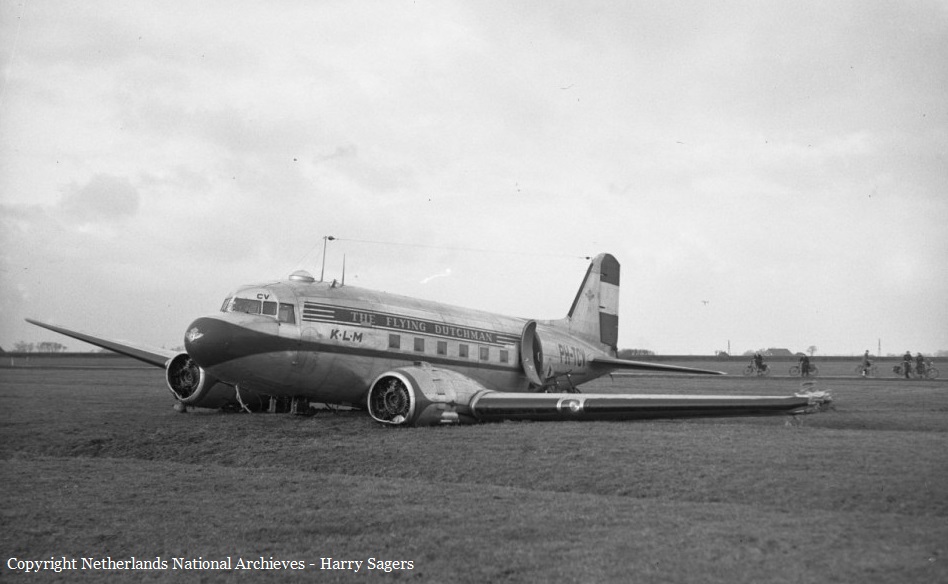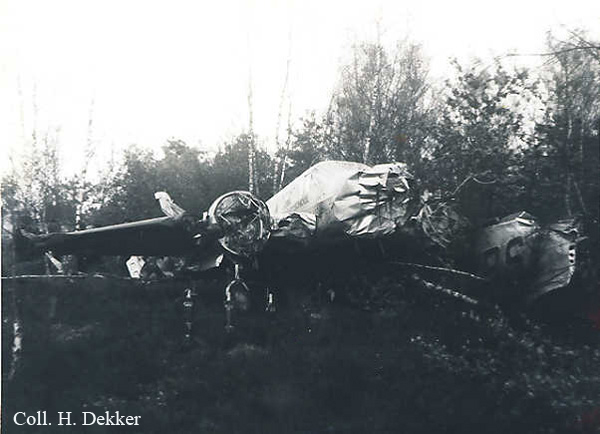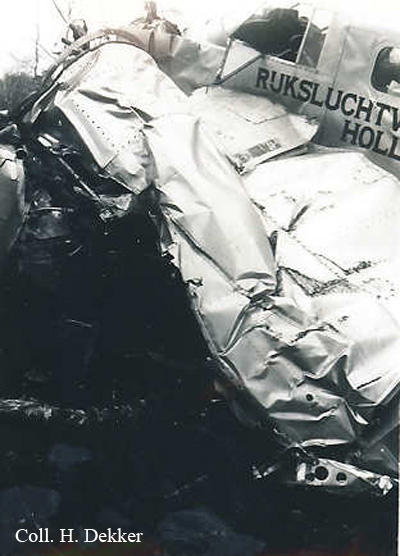Crash of a Douglas DC-4-1009 in Amsterdam
Date & Time:
Dec 14, 1951 at 1857 LT
Registration:
HB-ILO
Survivors:
Yes
Schedule:
Zurich – Amsterdam
MSN:
43098
YOM:
1947
Crew on board:
5
Crew fatalities:
Pax on board:
15
Pax fatalities:
Other fatalities:
Total fatalities:
0
Circumstances:
The approach to Amsterdam-Schiphol Airport was completed in thick fog. The captain told the crew that if the ground was not in sight at a height of 50 meters, he would divert to Brussels. On final approach to runway 23, at a distance of 400 meters from the runway threshold, the four engine aircraft hit the ground in a flat attitude. Upon impact, the undercarriages were sheared off, the airplane crashed and came to rest in flames 300 meters short of runway threshold. All 20 occupants were evacuated safely, except for the stewardess who was seriously injured by fire.
Crew:
O. Schüpbach, pilot,
E. Bill, copilot,
E. Senn, flight engineer,
M. Rüdlinger, radio operator,
M. Hutmacher, stewardess.
Crew:
O. Schüpbach, pilot,
E. Bill, copilot,
E. Senn, flight engineer,
M. Rüdlinger, radio operator,
M. Hutmacher, stewardess.
Probable cause:
It was determined that the crew continued an ILS approach in low visibility and passed below the minimum descent altitude without having any visual contact with the ground. In such conditions, it would be safer to abandon the approach procedure for a go around maneuver.
Final Report:
